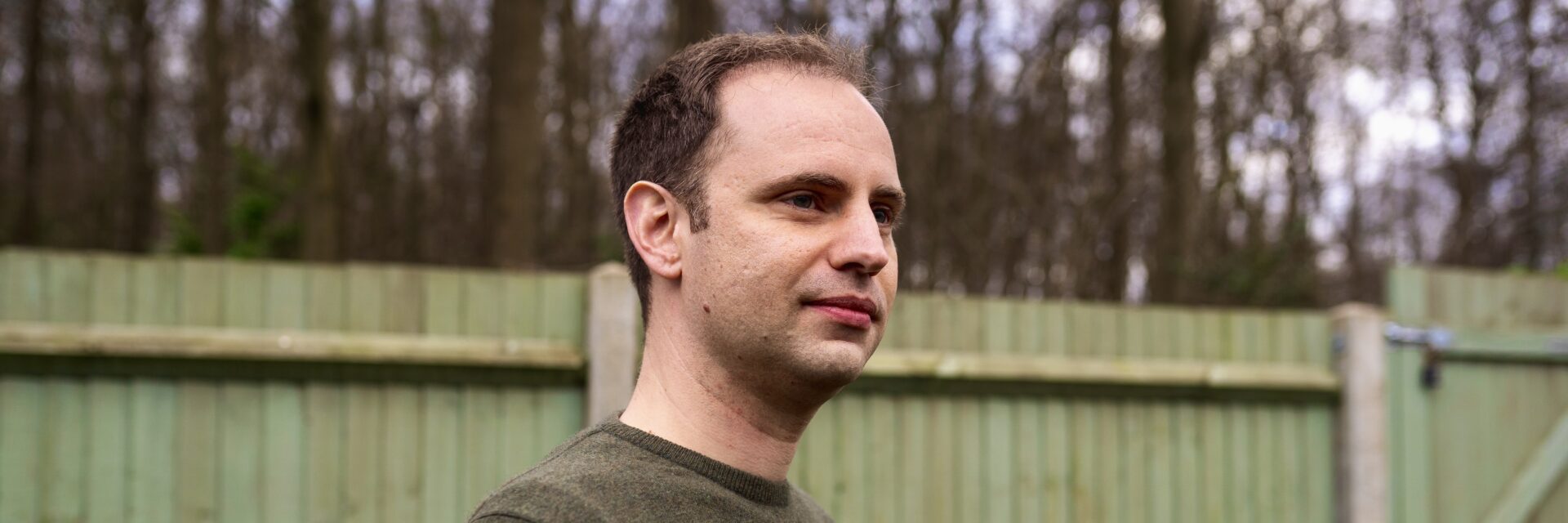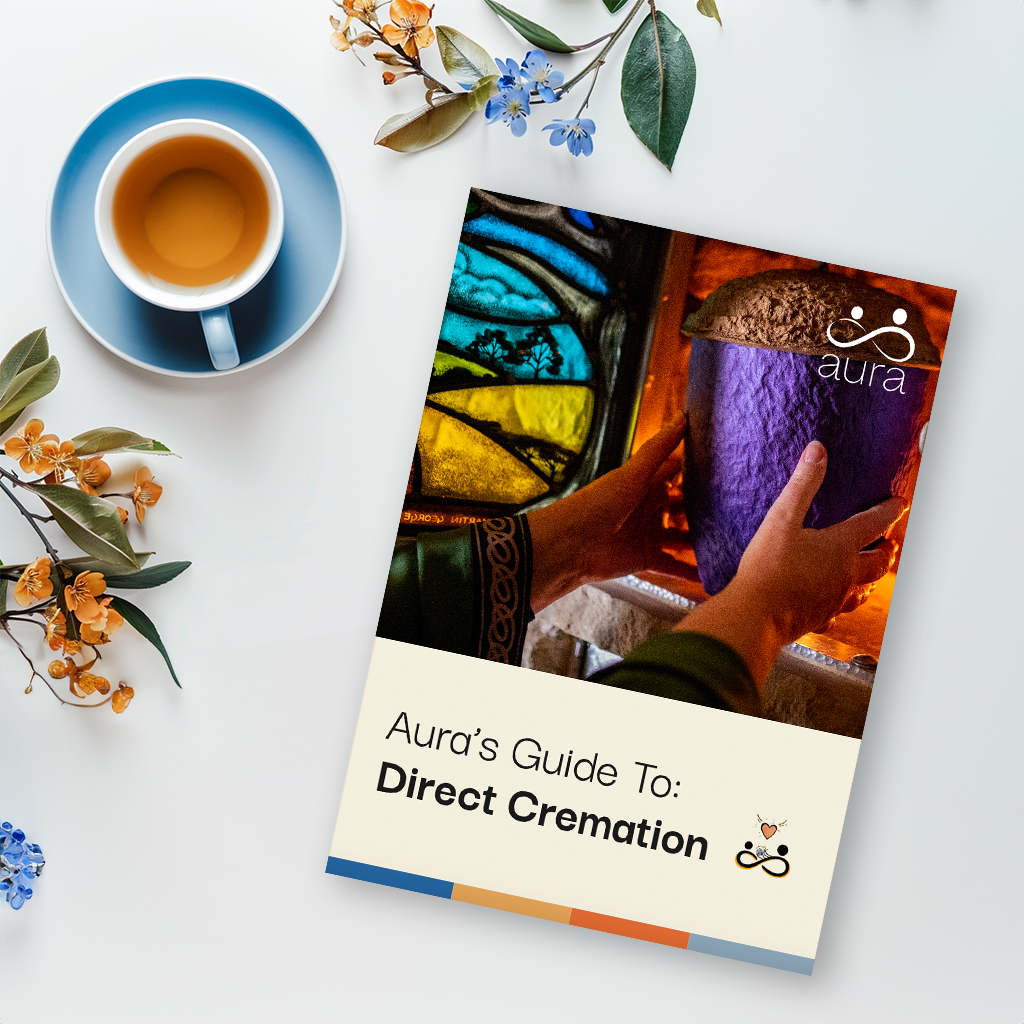
Two Together: Save £100!
Save £100 when you purchase two funeral plans together. Call us for more details.

Here for you this Easter
Our Funeral Plan team is available Friday & Monday, 10am–4pm. Call us for support.

Two Together: Save £100!
Save £100 when you purchase two funeral plans together. Call us for more details.

Here for you this Easter
Our Funeral Plan team is available Friday & Monday, 10am–4pm. Call us for support.

Despite the rising popularity of direct cremation as a form of funeral in the UK, many of us still have questions about what it is, and how it works. Aura is the top-rated provider of cremation services in the UK on Trustpilot, with a score of 4.9/5 stars, and in this article we are going to answer the question ‘How is a body prepared for cremation?’.
If you’d like to learn the answer to that, as well as other related questions, please read on.
Key takeaways:

The first question to answer before we come to discuss preparation is ‘what is direct cremation?’, as the body’s preparation is part of that overall cremation process. To put it simply, cremation is the process of reducing the body to ash by incineration, subjecting it to very high heat inside a cremator.
The practice of holding a cremation without a formal ceremony at a crematorium chapel, without any attendees or mourners, with the cremation itself following as soon as possible afterwards is typically what is called a ‘direct cremation’.
The initial steps of preparing a body for cremation are things like removing any personal items and medical devices from the person who has died, as well as cleaning and dressing them.
It’s important to inspect the person who has died carefully before the cremation begins for items of jewellery, and for medical devices. The sentimental reasons are more important with personal effects like jewellery, as it might be the case that the family wants them back in their possession. While some items are okay to include inside the coffin, so that the person can be cremated with certain special things alongside them, for environmental and practical reasons, it will depend on what the item is made of before it is permitted.
Medical devices, such as a pacemaker, radioactive implants or implantable drug pumps – essentially anything that might have a battery – will need to be removed before the cremation can take place. The risk with keeping items such as these inside the body whilst it’s being cremated is that they could explode in the extreme heat and damage the cremator, as well as possibly injuring the people who work at the crematorium.
The cost of removing medical devices is included in all of Aura’s prepaid direct cremation plans, but this is rarely the case with other providers, so make sure you know what you’re getting for your money beforehand, if you’re currently shopping around for a funeral plan.
When we bring the body of someone who has died into our care at one of our local care centres around the country, they are treated with dignity and respect. Prior to their cremation, they’ll be gently cleaned and dressed in clothing picked by the family, should they wish; otherwise, they’ll be clothed in a simple gown. We understand the importance of making sure that a family’s loved one is well prepared and well treated in advance of their final journey, and that the idea of this brings great comfort.
While there are some popular funeral myths concerning the practice of embalming, namely whether it’s legally required and whether it preserves a body forever, it’s not an essential practice for direct cremation. At Aura’s unattended cremations and attended cremations, the casket is closed, which means that the body is not on display; therefore we don’t embalm the bodies of those in our care. This helps to keep costs down for families, while sparing the use of various toxic and environmentally damaging chemicals such as formaldehyde.
Once the person who has died has been compassionately cared for and prepared for their cremation, they’ll be brought to the crematorium inside a private ambulance. Before setting out, and after arriving, there’ll be stringent identity checks to make sure that everything is correct.
When it’s time to bring the person to their cremation, their identity will be checked, and then they’ll be placed inside their coffin, which has a nameplate on it identifying them. The coffin is not reused, as they burn the coffin at a cremation.
There’s a certain amount of paperwork involved when someone dies. There’s something called the Medical Certificate (MCCD), which deals with medical aspects of the death, and there’s the Death Certificate, which is important for legal matters. Once both have been obtained, then the family can register the death of the person who has died. The person who has registered the death will then be supplied with a Certificate for Burial or Cremation (otherwise known as a Green Form), which allows the cremation to take place.
The body, within its coffin, is placed inside the cremation chamber, or cremator, which is what will physically carry out the cremation process. The vast majority of cremations happen with the body inside a coffin, but some people, for environmental reasons, prefer to be wrapped inside a shroud and placed flat on a board instead. Not every crematorium allows this option, so if it’s likely to be important, it should be checked beforehand.
These days, there are quite a wide variety of different coffin types that can be selected. The classic mahogany coffin is now often customised with different colours, themes, and designs, which can align with the passions and interests of the person being cremated. There’s also more choice in terms of materials, with more and more people selecting coffins made of wicker and reinforced cardboard, with a focus on being more environmentally (and cost) conscious.
Following the cremation, the cremator is cleaned thoroughly after each use. The ashes are gathered, once the cremator has cooled, and then placed in an urn or scatter tube.
With an Aura direct cremation, we will hand-deliver the ashes back to the family at home within 21 days of the cremation taking place for a nominal fee, or we can scatter them on their behalf at the crematorium’s own Garden of Remembrance at no cost.
During a cremation, the body, along with the coffin or shroud containing it, is reduced to ashes at extremely high temperatures. The ashes are then gathered in order to be returned to the family or scattered.
Once the coffin is placed inside the cremator, it takes one-to-three hours to cremate the body on average, depending on the material used for the coffin, and the size of the person. The cremator is heated to extremely high temperatures: between around 800C and 1100C. In such temperatures, the body is reduced to ashes through a process known as ‘pulverisation’ (to be turned into powder).
In cases where the handles of the coffin were made of a metal that could withstand the heat of the cremator, these are extracted and removed. However, these days, the fixtures and fittings of the coffin are normally made of combustible materials like plastic, which melt and are consumed in the cremation process.
Once the cremation is complete, and the cremator has cooled enough to be safe for the crematorium attendants, they will gather the ashes using an extraction tool. Once this has been completed, they are gathered together and placed into an urn or a scatter tube in order to be returned to the family.
After the cremation, the ashes are collected and either returned to the family or scattered at the crematorium. Once returned to the family, the ashes can be scattered somewhere special to the one who has died, or converted into meaningful keepsakes that lets them commemorate them more meaningfully.
Once the cremation is completed and the ashes have been gathered and stored, we make sure that we always know who they belong to. From the moment that the person who has died has been cremated, to the moment that their ashes are placed in one of our durable scatter-tubes, we make sure that there is dignity in every detail of our process.
We ensure that the ashes are documented and accounted for, and we make sure that their location is known at all times until they are either returned home, or scattered in the crematorium’s Garden of Remembrance.
Depending on what the family would prefer, the ashes of the person who has been cremated can either be returned to them at home, or scattered at the crematorium. Many people are unsure of what to do with the ashes once they receive them at home. These days, people are having all kinds of creative cremation ashes ideas, from storing them in a customised urn at home, to using them to make jewellery or keepsakes, to even mixing them with ink to make a cremation tattoo.
With the rise of direct cremation as a form of funeral in the UK, more and more people are looking for modern, low-cost alternatives to the traditional norm. It’s not surprising that we are looking for more personalised ways to incorporate the remains of those we’ve loved and lost into the way we remember them for the long term.
We hope you’ve found this article informative, and that it’s answered your questions about how a body is prepared for cremation. Aura is the UK’s top-rated ‘Cremation Services’ provider on Trustpilot, with a rating of 4.9/5 stars. Our uniquely compassionate approach to service has led the families who’ve entrusted themselves to our care to rate us so highly.
Our fantastic Angel Team are our industry-leading funeral arrangers, and they cannot be found anywhere else but Aura. Whether as part of a funeral plan for the future, or for arrangements needed in the here and now, they’ll be there to support you or your family through all the emotionally and logistically difficult times ahead. They’ll make sure that all the paperwork is in order, and that the funeral being organised is exactly what the person who has died would have wanted. If we can help with anything at all, please feel free to give us a call.

If you’d like more information about direct cremation and Aura’s funeral plans, then our downloadable guide can help. Find out why others are choosing this affordable, no-fuss alternative to traditional funerals and why it might be right for you too.
Download our guide by clicking the link below and learn more about this simple funeral plan option.